

From about 7th- 6th century B.C. a new medium of transaction was evolved in the form of a currency known as coins. The introduction of coins replaced the earlier modes of transaction which was designated as barter system. Worked out in metals, the coins opened up anew discipline called numismatic studies. Such a studyhas been considered as one of the most reliable sources to reconstruct the history of India. While in certain cases
efforts took the country to an all time height of excellence in every sphere of human activities including the art of coinage. The imperial Guptas issued a rich variety of gold coins with portraits on the obverse and the deities on the reverse. Some of these coins were commemorative of certain events. These bear epithets and legends in Brahmi scripts and indicate the classical status of Sanskrit language, the period attained. The coins of Gupta period record the indigenous features. Chandragupta I issued a commemorative coin to mark his marriage with Lichchhavi princess; the Asvamedh and Lyricisttype of Samudragupta`s gold coins (displayed in the Nidhi gallery) record his political
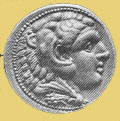
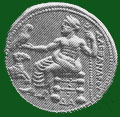
supremacy as well as evince artistic bent of his mind. The coins of Chandragupta II present him as an efficient rider, as a lion slayer and as an expert archer. The associated legands refer him as kings, a king of great valor and a devout followers of Vishnu.The reverse bears the figure of goddess Durga or Lakshmi. His efficient successor Kumargupta I also issued gold
coins portraying him as a rhinoceros slayer, as an invincible (apratigha) person and as a devotee of god Kartikeya. Guptas also issued coins in silver and copper. The copper ones were very much limited in circulation. The human and divine figures depicted on the Gupta coins bear the characteristic of contemporary classical sculptures in terms of their plastic qualities, linear dispositions in the artistic bearings.
interest. The paleography of the legends, the meaning of symbols, the iconography of deities, the features of kings and queens, the artistic analysis of the figures delineated on the
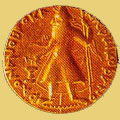
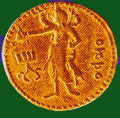
The successors of the Imperial Guptas in the latter half of the century A.D. were considerably waek. Alien invasions, specially by the Hunas, further weakened the powers of the later Guptas.Regional rulers who were once submitted to the Guptas declared their independence and ushered in a state of political instability. The different parts of India during this
obverse and reverse are other areas, if carefully studied, have the potentialities to throw sufficient light on the history and culture of the period, with which the said coin is found to be related Bharat Kala Bhavan has a rich collection of about 33,000 coins and it covers a period from circa 6th century B.C. to present era. The cabinet has an all India character. Made of mostly in gold , silver and copper, the collection also includes
period of unrest, followed the Gupta system of coinage for some time. In eastern India, Sasanka of Gauda was one such ruler. On the reverse of his coins one finds the continuity of the presence of Gajalakshmi while on the obverse, he introduced Siva with his bull. The bull and the horseman variety dominated the Indian coinage for another four hundred years tillthe advent of the Ghaznisin the lOth century A.D.
The Sultanate India witnessed notable change in the field of coins. The indigenous types were replaced by purely Islamic variety. The human and
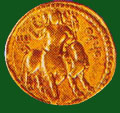
coins made of lead, potin, billon and other alloys including some rare currency notes.
The earliest coins of India known as punch marked, are found scattered all ,
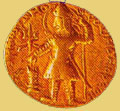
the tradition of Gahadavala coins showing Lakshmi on the reverse. Following the tradition of horseman type, gold and silver coins of Mohammad-bin-sam,his general in Bengal, Bakhtiyar Khalji issued coins from Bengal and the coin legend in Nagri script referring the name of the issuer was accommodated within the circular edges ;it included also date in samvat on the reverse celebrating his victory over , : Gauda.The local people readily accepted such corns that had Lakshmi on the reverse and the writings in Nagri script. The practice of minting coins was suitably -patronized and standardized by
over the country. .By and large ,these were made in silver ( a number of such coins displayed ) and these are available in round, rectangular and occasionally in irregular shapes. Each bears one or more than one but no exceed in five symbols. In this series , there is a variety, rectangular bar shaped coin (on display) known as bent-bar (satamana) which has been discovered from
Gandhara region .These bent-bar variety is regarded as earliest currency. The symbols punched on these coins are either relate to a tradeguild or a particular region. The use of
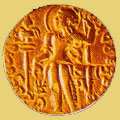
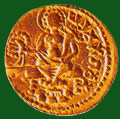
Iltutmish and the, decentralization of mints to elsewhere from Delhi was done by Balban The Khalji ruler minted gold and silver coins with the legend Sikarda-al-sani i.e., the Second Alexander with the idea to conquer the world while Qutubuddin referred himself in his coin legend as the supreme head of Islam and the Lordof heaven and earth. When Sher
copper for currency was evolved a little later. Such coins were produced by casting methods from moulds. As local , tribal or monarchical issues, copper cast coins became quite popular in entire span of northern India. The gallery includes a number of such a cast specimens
The Achaemenian and Greek invasions to India through the north-western region had a great.
Shah came into power, he introduced a number of changes in the fiscal policies including the shape, size and use of metals for coins. He abolished billon and introduced a standardized copper currency b viz.,the paisa while the silver tanka introduced earlier by Iltutmish, was given circulation in his time. The term tanka was changed by the term rupaya' which still holds good.
The Mughals established their empire in 1526 A.D. The strength, stability
impact on coinage of India. For centuries foreign invasion went on from about the 4th century B.C, as a result of which round and artistically better types of coins were introduced.
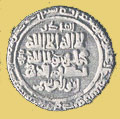
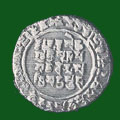
and prosperity of Mughal empire are marked in the coins of the period. The emperors paid personal interest in the mintage of coins. The grand series of currency standardised by Shei Shah Suri provided the model for the Mughal mintages. Mohur in gold, rupeein silver and dam in copper continued to beminted in various denominations in Mughal kingdom.
These coins have thrownsufficient light on the history and culture of the Indo-Greeks, Indo-Scythians, Indo-Parthians and so on. Made in the technique of I die- , struck', these coin were neatly executed in silver and copper. These coins bear legends in Greek on the obverse and in Kharoshthi on the reverse and are endowed with male and female deities of alien origin besides the naturalistic renderings of the portraits of issuing kings . Some of these coins have been displayed in
Eminent artists and calligraphers who were in the ateliers of Akbar, were commissioned in the manufacture of coins. Thus Mughal coins of this period were produced with beautiful calligraphy in Nastaliq and were decorated with the floral, geometrical and arabesque designs. Thecoin legends gave prominence to the name of Khalifas. Besides, the name of the mint was also incorporated on the surface. For a limited period Akbar introduced 'Ilahi' date on his issues. Most notable and interesting among his mintage were certain silver and gold coins depicted the figure of Raffia and Siya with the Devanagari script in Avadhi dilect. Bharat Kala Bhavan has one extremely rare silver coin of this type which refers to Ilahi regnal year 50 and the Persian month' Amardad' which corresponds to the
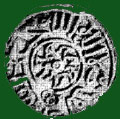
A.D.1605 i.e" that year in which Akbar passed away (displayed in the Nidhi gallery).
Emperor Jahangir issued a number of coins strikingly rich in variety and he introduced certain novelties. He introduced a series of coins with zodiac signs and some of hiscoins bear his portraits beautifully
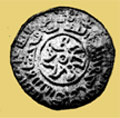
executed. The Museum has some such coins both in gold and silver. In his portraits, the halo behind his head points to his divine association and his bearings are found to be majestically delineated (displayed in the Nidhi gallery). Subsequently, the provincial . chiefs followed the patterns of their Mugha lover lords in minting the coins. Such coins continued to be in circulation for a long span of time till the advent of the British East India Company. These people introduced a new technique in the fabrication of coins from about 1835 A.D. The coins produced in this new
development of coins in India. The Kushanas introduced gold coins with notable emphasis on the portraiture of the issue in divine kingship cropped upduring this period. The period kings. A new concept of witnessed the continuity of Greeko-Bactrian mannerisms but also experienced the beginning of Indianisation in the process. The period evinced the incorporation
of Indian deities on the reverse of coins such as Siva with bull or without the mount , Uma, Mahasena, Skanda Kumara and Visakha. Interestingly enough, king Kanishka included
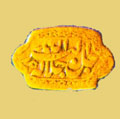
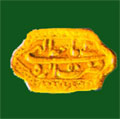
technique included the effigy of king or reigning queen, referred to the date of minting in Christian era and legends appeared in Roman script. Of the metals used, .silver became more popular. The period also witnessed the introduction of paper currencies. The Museum also has a representative collection of commemorative coins. The practice of issuing
the image of Buddha on the reverse of some of his gold and copper coins. Some of the copper coins of the period are on display.
The Gupta dynasty came into prominence in the 4th century .The rulers of this rule dynasty about two hundred years. They not only brought a political unity in India but by their undaunted
commemorative coins started from November 1964 and continues. The Museum has the first commemorative coins in the memory of the architects of India Is Freedom including the portrait of the first Prime Minister of the country, Pandit Jawahar Lal Nehru. The second in the series was issued in 1969 to mark the Gandhi Centenary Celebrations and thereafter, a number of such coins were minted. The Museum possess some of these issues and most of these are on view.